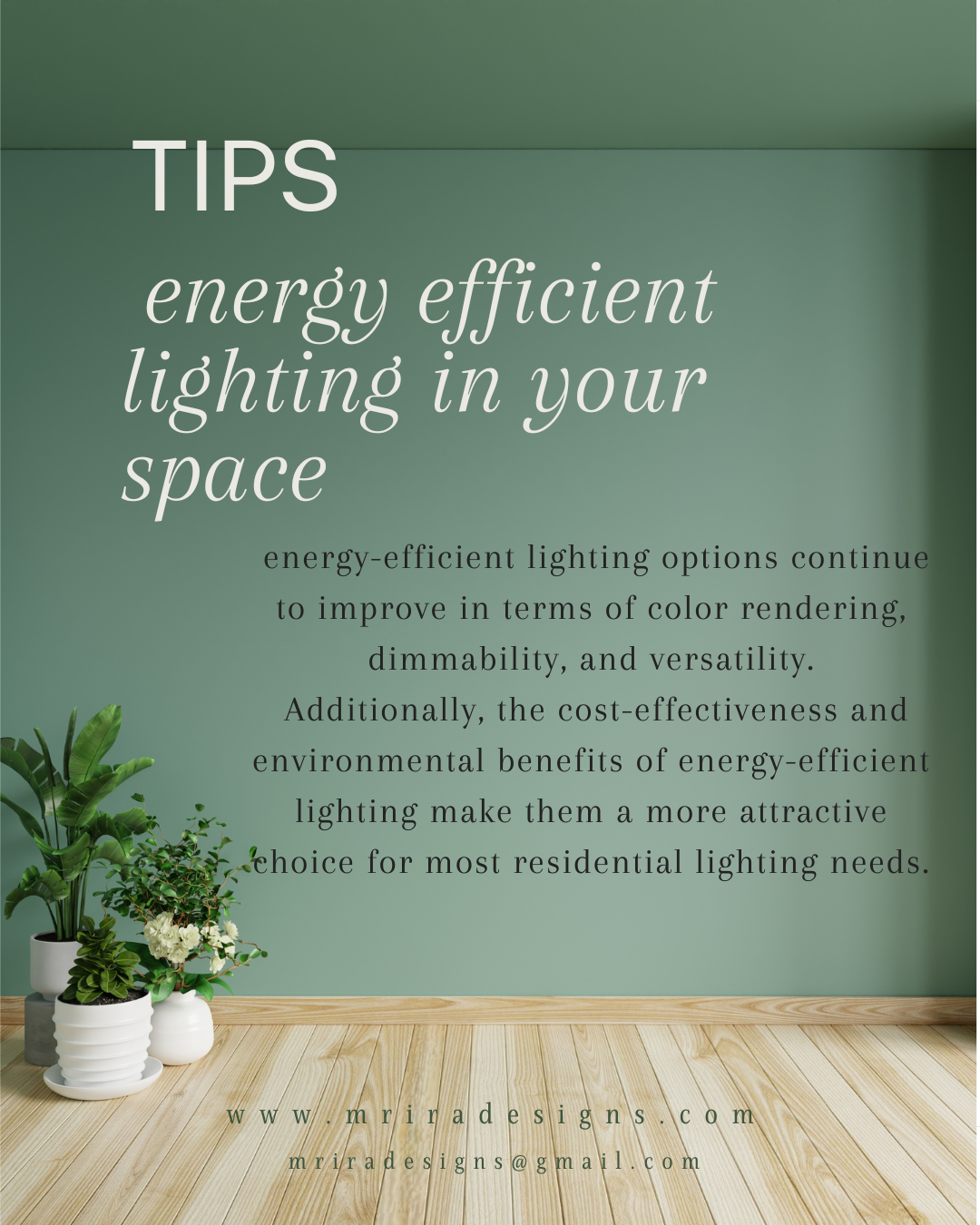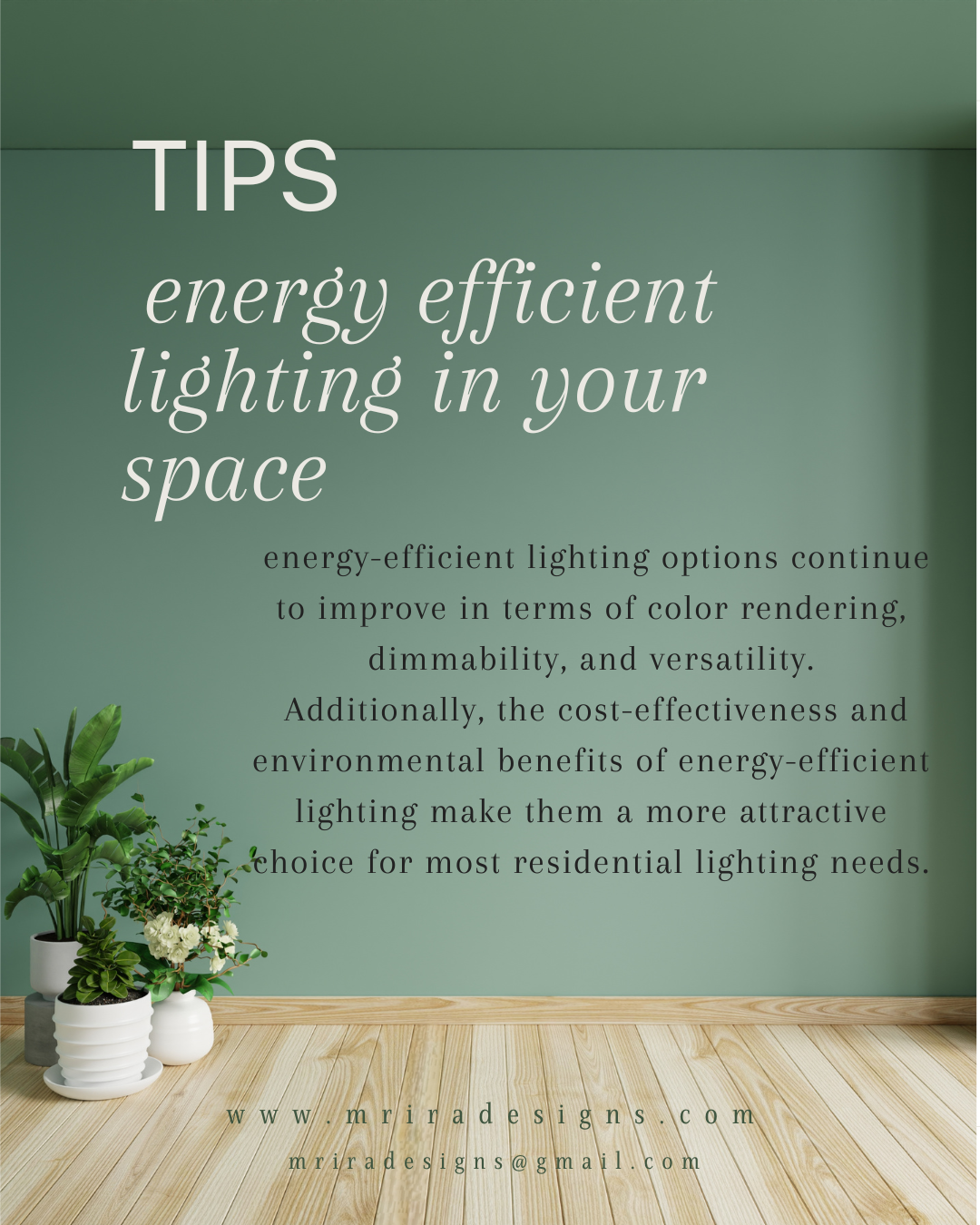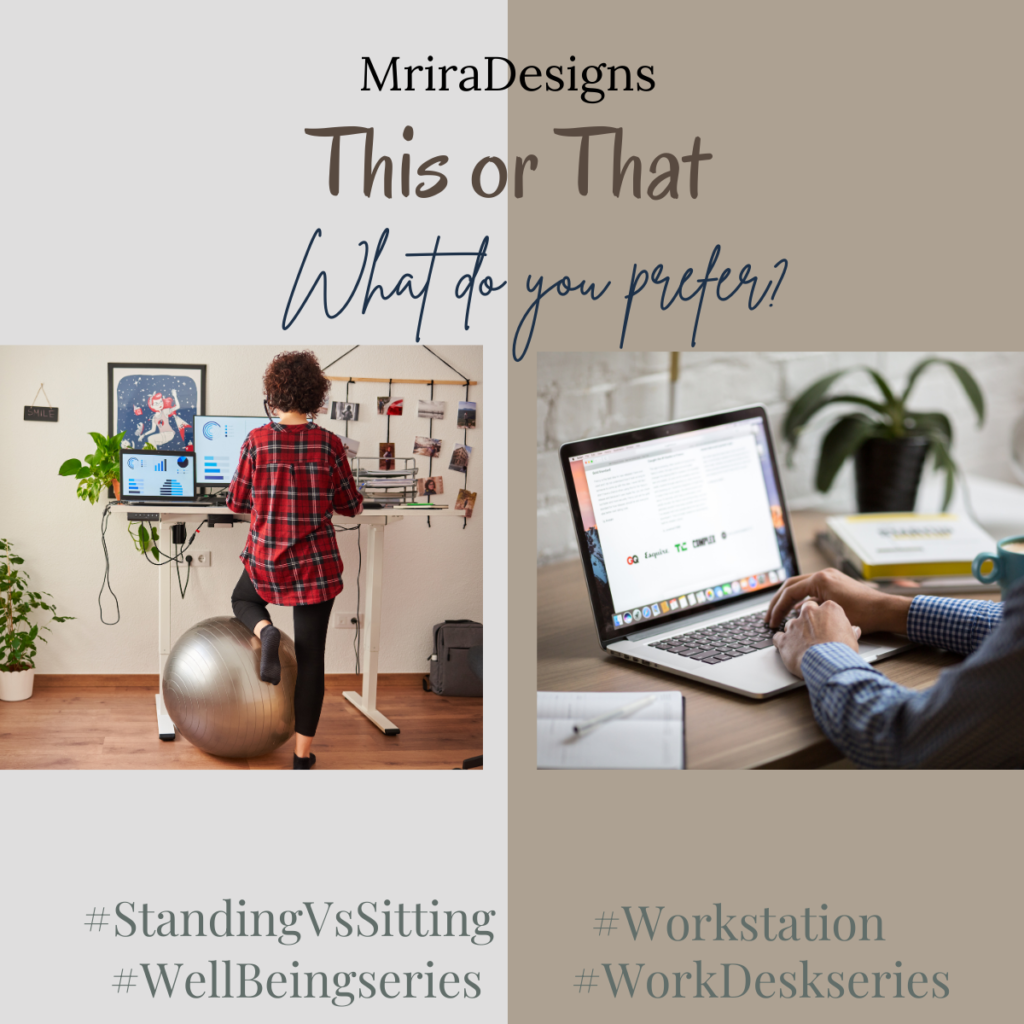
Energy Efficient Lighting in Interiors
a comparative difference between energy-efficient lighting and non-energy-efficient lighting in a room:
- Energy Consumption:
- Energy-Efficient Lighting: Energy-efficient lighting, such as LED or CFL bulbs, consumes significantly less electricity than traditional incandescent bulbs. They produce the same or even more light while using a fraction of the energy.
- Non-Energy-Efficient Lighting: Non-energy-efficient lighting, like incandescent bulbs, consumes more electricity and generates a significant amount of heat as wasted energy.
- Lifespan:
- Energy-Efficient Lighting: Energy-efficient bulbs have a longer lifespan, typically lasting 10-25 times longer than incandescent bulbs. This reduces the frequency of replacements.
- Non-Energy-Efficient Lighting: Incandescent bulbs have a relatively short lifespan, leading to more frequent replacements and higher maintenance costs.
- Heat Generation:
- Energy-Efficient Lighting: Energy-efficient bulbs produce significantly less heat during operation, which can help reduce cooling costs in warm climates.
- Non-Energy-Efficient Lighting: Incandescent bulbs waste a large portion of energy as heat, which can lead to higher cooling expenses in addition to their energy consumption.
- Light Quality:
- Energy-Efficient Lighting: LED and CFL bulbs offer a range of color temperatures and high-quality lighting options, allowing for better control over the ambiance and mood in a room.
- Non-Energy-Efficient Lighting: Incandescent bulbs may have a warmer color temperature, which some people prefer for certain settings, but they are less versatile in terms of lighting options.
- Environmental Impact:
- Energy-Efficient Lighting: Energy-efficient bulbs have a lower environmental impact due to reduced energy consumption and longer lifespans. They also contain fewer hazardous materials.
- Non-Energy-Efficient Lighting: Incandescent bulbs have a higher carbon footprint and contain materials like tungsten and glass that can be harmful to the environment.
- Cost Savings:
- Energy-Efficient Lighting: While energy-efficient bulbs may have a higher upfront cost, they typically result in significant long-term cost savings due to lower energy bills and reduced replacement expenses.
- Non-Energy-Efficient Lighting: Incandescent bulbs may be cheaper initially but end up costing more over their shorter lifespan due to higher energy consumption and frequent replacements.

